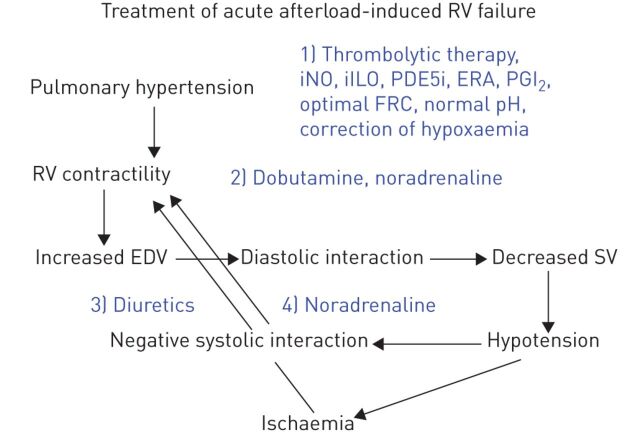Figure 5.
Pathophysiology of right ventricular (RV) failure. Pulmonary hypertension increases RV afterload requiring a homeometric adaptation, i.e. an increased RV contractility. When this adaptation fails, the RV enlarges with increased end-diastolic volume (EDV), decreasing left ventricle preloading because of competition for space within the pericardium. This decreases stroke volume (SV) and blood pressure, with negative systolic interaction as a cause of further RV–arterial uncoupling, which may be aggravated by RV ischaemia from decreased coronary perfusion pressure (gradient between diastolic blood pressure and right atrial pressure). Obvious targets for interventions are indicated as 1 to 4. See the A global view on RV failure section for further details. iNO: inhaled nitric oxide; iILO: inhaled iloprost; PDE5i: phosphodiesterase type-5 inhibitor; ERA: endothelin receptor antagonist; PGI2: prostaglandin I2; FRC: functional residual capacity.

